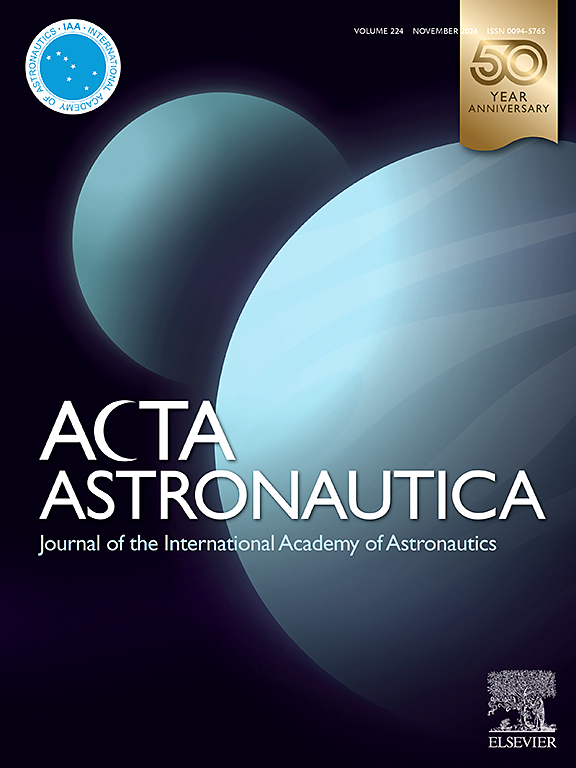Mission analysis for the Radiation Environment Monitor for Energetic Cosmic rays (REMEC) mission
IF 3.1
2区 物理与天体物理
Q1 ENGINEERING, AEROSPACE
引用次数: 0
Abstract
The Radiation Environment Monitor for Energetic Cosmic rays (REMEC) is a micro-sat mission developed to reach deep space to study, for the first time outside the Earth’s magnetosphere, Solar Energetic Particles (SEP). The main scientific payloads consist of the Penetrating particle ANalyzer magnetic spectrometer (Pix.PAN), based on Timepix4 technology, and the HardPix radiation monitors. The trajectory design developed for the REMEC mission phases 0-A and B1 is described herein. First, possible operational orbits in the Sun–Earth (SE) and Earth–Moon (EM) systems are identified. Then, by exploiting the Circular Restricted Three Body Problem (CR3BP), feasible trajectories are calculated for both a baseline and a backup option. The dynamical model for the baseline case is then refined, including the direct effect of the Moon on the dynamic. In addition, propulsion system requirements were to be considered in the analysis, and an orbit-raising strategy was developed. Finally, the results obtained with the refined dynamic, both on the operational orbit and the transfer trajectory, and with the orbit-raising strategy are shown and commented.
求助全文
约1分钟内获得全文
求助全文
来源期刊

Acta Astronautica
工程技术-工程:宇航
CiteScore
7.20
自引率
22.90%
发文量
599
审稿时长
53 days
期刊介绍:
Acta Astronautica is sponsored by the International Academy of Astronautics. Content is based on original contributions in all fields of basic, engineering, life and social space sciences and of space technology related to:
The peaceful scientific exploration of space,
Its exploitation for human welfare and progress,
Conception, design, development and operation of space-borne and Earth-based systems,
In addition to regular issues, the journal publishes selected proceedings of the annual International Astronautical Congress (IAC), transactions of the IAA and special issues on topics of current interest, such as microgravity, space station technology, geostationary orbits, and space economics. Other subject areas include satellite technology, space transportation and communications, space energy, power and propulsion, astrodynamics, extraterrestrial intelligence and Earth observations.
 求助内容:
求助内容: 应助结果提醒方式:
应助结果提醒方式:


